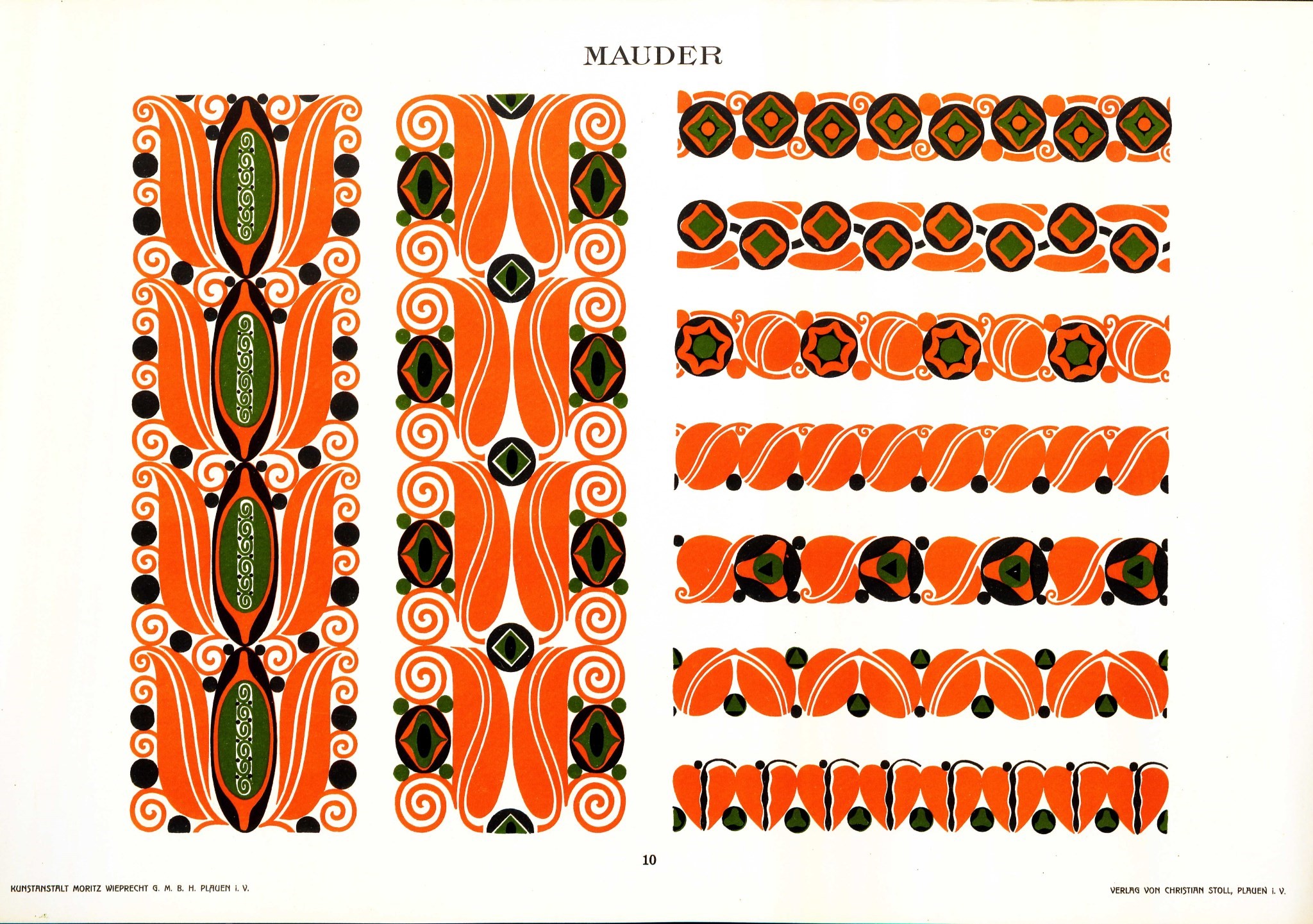Bruno Mauder (1877-1948), a designer of glass art, studied at the School of Applied Arts in Munich from 1899 to 1901 and in 1909, was appointed director of technical school for glass industry and wood carving in Zwiesel, Germany. For the next 40 years, Mauder worked as a glass designer in this area including the famed glassworks at Theresienthal. He is known for his hollow glass designs that combine traditional German patterns with contemporary expressionist and abstract Bauhaus imagery. Although Mauder authored works specifically on glass design in 1930s, Ornamente von Bruno Mauder, dated 1910, appears to be one of his earliest publications. Publisher Christian Stoll produced numerous large visual folios, such as his work, to promote innovative patterns to inspire designers worldwide. With this purpose in mind, this folio consists of a series of 16 chromolithographic plates of colorful, bold, and abstract forms reminiscent of the work of Austrian artist Koloman Moser (1868-1918) and the Wiener Werkstȁtte school. The school, founded in Vienna in 1903, aimed to raised that status of the craftsman to artist with the ultimate goal of enhancing life through the creation and promotion of innovative and finely crafted functional and decorative objects. Like many designers working in Austria-Germany at this time, Mauder no doubt, had access to publications as well as first hand access to the work of contemporary designers along with the non-western art. It has been suggested that the bold forms found in Expressionism and traditional African tribal art motifs strongly influenced his designs in this work.
Tombstone
- Ornamente von Bruno Mauder. Plauen i Vogtl: Christian Stoll, 1910.
Collection Record
